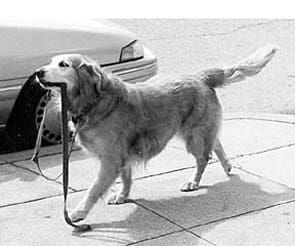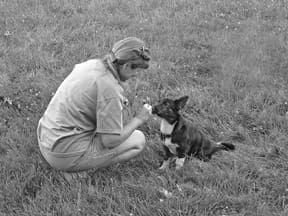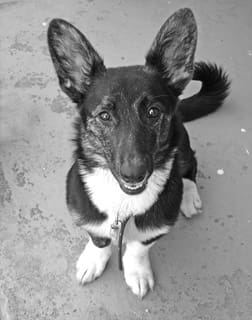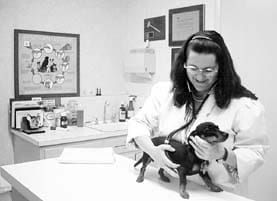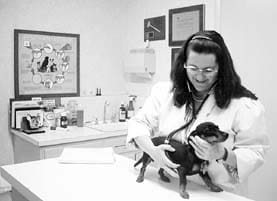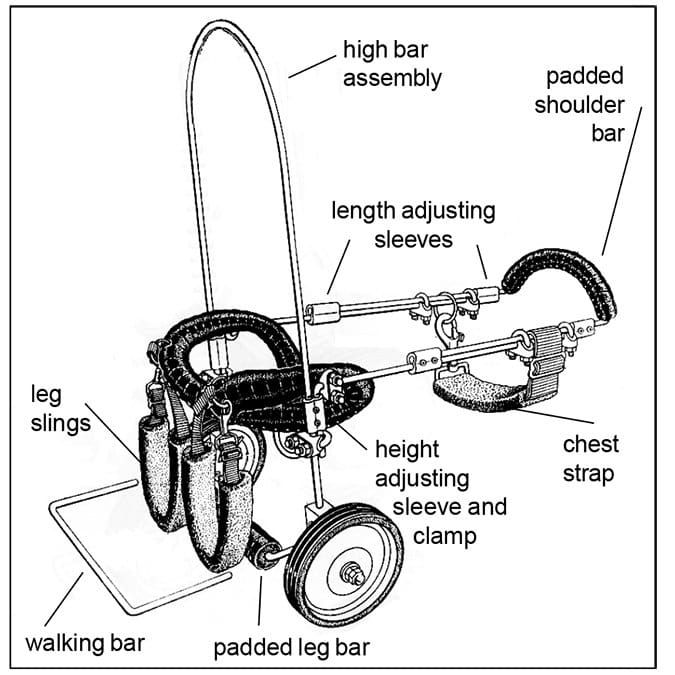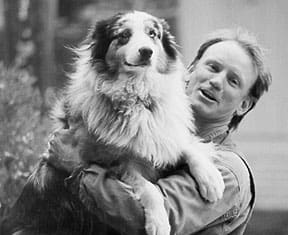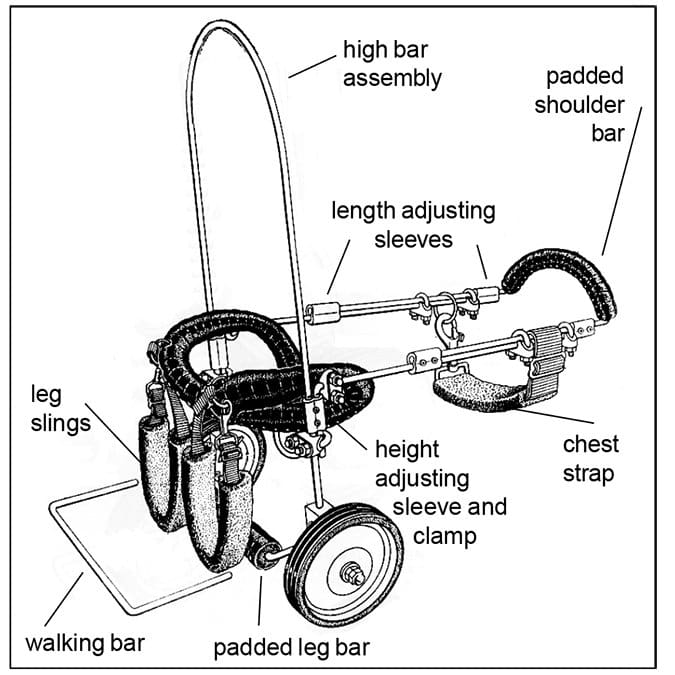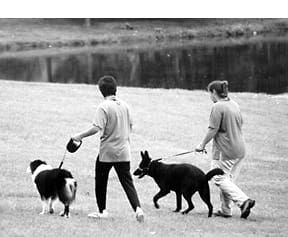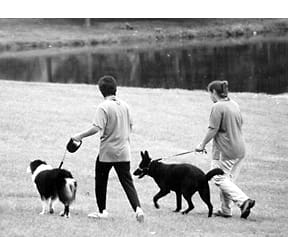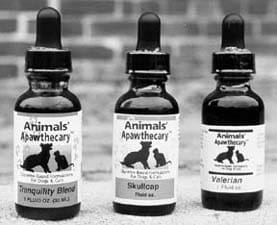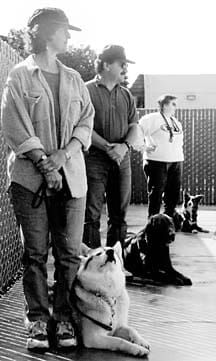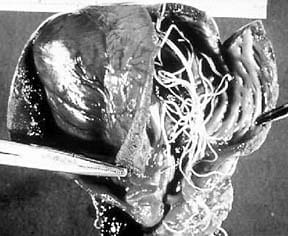For humans, a source of vitamin C in the diet is literally necessary for survival. Early sailors deprived of fresh foods for extended lengths of time often suffered from “scurvy,” a nasty affliction characterized by bleeding gums, loss of teeth, a weakened condition, and sometimes death. It wasn’t until the late eighteenth century that Captain James Cook, the first European to visit the Hawaiian Islands, taught the British Admiralty how to prevent scurvy by adding fresh fruit or lime juice to its sailors’ daily ration of rum (thus earning them the nickname of “Limeys” that endures to this day).
In the early 1900s, ascorbic acid was isolated and identified as the nutrient that prevented scurvy. Humans, it was discovered, are among the few animals that cannot manufacture vitamin C in their own bodies, and must obtain it from an outside source (fresh fruits, vegetables, or vitamin C pills) on a regular basis in order to avoid illness.
Dogs, however, can produce vitamin C in their bodies, and because of this ability, nutritionists have long considered it unnecessary to add C to a dog’s diet. Until recently, few dog food makers added vitamin C to their products – or if they do, it was for the preservative action of the vitamin, rather than its nutritive value.

Vitamin C Benefits Sick and Stressed Dogs
This may be appropriate when dealing with healthy unstressed animals, but recent clinical observations indicate that when dogs are sick or stressed, they can rapidly deplete their bodies’ output of vitamin C. A 1942 study noted that dogs with skin diseases usually have very low amounts of vitamin C in their blood.
Other researchers have found the blood levels of vitamin C to be low – and even non-existent – in dogs with fevers and dogs who have exercised to their limits (sled dogs after a race, for example, or hunting dogs in the middle of hunting season).
Stress is the best-known cause of vitamin C depletion in dogs. Physical stress comes in many forms: gestation, lactation, growth, hard work (dogs used for herding, hunting, tracking, etc.), vaccinations, injuries, tail-docking or ear cropping, or illness. Emotional stress, whether caused by relocation, weaning, or demanding training, can also deplete this reserve. In fact, researchers can measure the level of stress a dog experiences by measuring the degree of depletion of the vitamin in the dog’s blood.
Conversely, many studies have found that dogs (as well as humans) that are supplemented with vitamin C show greater resistance to disease, and a better ability to recover from injuries or illness.
How Vitamin C Affects Dogs
Wendell O. Belfield, DVM, is perhaps the world’s best-known and most ardent advocate of vitamin C supplementation for dogs. In his book, “How to Have a Healthier Dog,” Belfield describes how he first came to experiment with (and appreciate) the power of vitamin C in his veterinary practice.
Following a particularly heartbreaking episode, where he was unable to save the life of a beloved family dog that had distemper, he began researching viral diseases. In the course of his studies, he came across an article about a doctor who used massive doses of vitamin C to successfully treat viral diseases such as polio and hepatitis in the 1940s. Belfield began wondering whether C could be used to combat canine viral diseases.
One day in 1965, another client came to Belfield’s office with a dog that was suffering from distemper. Belfield decided to try an injection of vitamin C on the dog, and it responded dramatically, surviving what he had been taught in veterinary school was a fatal disease for which there is no successful treatments.
Following this success, Belfield began experimenting with vitamin C treatments for all kinds of conditions in dogs. His trials and studies have convinced him of the tremendous power that the vitamin holds for dogs.
According to the “Encylcopedia of Nutritional Supplements,” by Michael T. Murray (1996, Prima Publishing), vitamin C improves immune function by enhancing white blood cell function and activity. It also increases the blood levels of interferon (the body’s natural antiviral and anticancer compound) and antibodies (proteins that bind to and destroy foreign material such as bacteria, viruses, and toxins).
Vitamin C is commercially available by itself or combined with other nutrients in a number of forms. See Which Form of Vitamin C is the Best?, below, for information about your options.
Antioxidants and Bioflavonoids
Vitamin C acts in the body as an antioxidant. Oxidation is the chemical reaction of oxygen combining with another substance, and oxidation of food by an animal is a natural process which provides both the heat and the energy needed to keep the body running. Too much or too little oxygen in the system, however, can create toxic by-products called free radicals, which can damage cell structure, impair immunity, and alter DNA codes.
As an antioxidant, vitamin C acts as both an oxygen interceptor (thus protecting the cells from being destroyed or altered by oxidation) and as a scavenger of free radicals. It not only prevents oxidation, but will, for instance, return oxidized vitamin E back to its original state by stealing an oxygen molecule away from the E molecule. Thus vitamin C is a restorative substance that inhibits tissue and collagen degeneration by working in conjunction with the other vitamins and minerals that protect the body and its systems.
As a demonstration of the antioxidant powers of vitamin C, try the following: Dissolve a 1000 milligram tablet of the ascorbic acid form in a large bowl of water. Take some lettuce that has been in the refrigerator a little too long and is getting slightly brown around the edges. Dunk the lettuce in the water for several minutes, then drain it and notice the change. The lettuce should be crisper, fresher and some or all of the brown tinge will be gone. You have just reversed the effects of oxidation! Apple or potato slices can also be dunked in vitamin C solutions to prevent browning. (Antibrowning agents sold for home canning are usually ascorbic acid powder.)
Many types of vitamin C sold also contain bioflavonoids, which are naturally-occurring plant pigments which the body can use to manufacture other nutrients. Beta-carotene, for example, is the bioflavonoid used by the body to manufacture vitamin A. Hesperidin, rutin, acerola, rose hips, citrus bioflavonoids, and bioflavonoid complex are all bioflavonoids commonly used in vitamin C products.
Occasionally supplementing your dog’s diet with grated carrots or apples, or offering him any other fresh fruit he finds palatable are great ways to enhance his bioflavonoid intake. Fresh, ripe melons and peaches are two fruits that many dogs enjoy.
Ways to Use Vitamin C on Dogs
Time and further studies are bearing out Belfield’s findings. Today, vitamin C is routinely prescribed by holistic veterinarians for a number of illnesses, including cancer, kennel cough and other respiratory infections, abscesses, and other bacterial infections. Due to its important role in maintaining the health of collagen, it appears to be especially helpful for slowing – and some say, reversing – degenerative joint disease, hip dysplasia, and spinal disorders.
The use of vitamin C as a preventative and immune booster are also celebrated. Some veterinarians suggest giving C to dogs before and after vaccination, to dogs that have been exposed to contagious diseases, to pregnant and lactating dogs, and for healthy teeth and gums.
According to Belfield, young dogs and old dogs can benefit the most from routine vitamin C supplements. Due to the extensive stresses faced by puppies and young dogs, such as numerous vaccinations, surgical procedures on dewclaws, tails, and ears, and the demands of rapid growth, he suggests that all young dogs receive C.
As they get old, dogs become less proficient at producing their own supply of vitamin C, and more in need of antioxidants. Administering vitamin C to even very old and feeble dogs, says Belfield, can reinvigorate and strengthen them.
Vitamin C Dosage for Dogs
The average dog normally produces about 18 milligrams of vitamin C per pound of body weight per day. Therefore, for a dog that is free of clinically significant symptoms but is experiencing unusual stress, supplementation with about that much C per day appears be a conservative maintenance dosage. (About 500 milligrams for a 28-lb. dog daily.) To increase absorption, veterinarians recommend splitting the total daily dosage into several feedings during the day.
However, many holistic veterinarians routinely suggest maintenance doses that are three to four times that amount. They explain that modern, domestic dogs need more vitamin C than the theoretical “natural” dog, since their bodies must deal with so many challenges: stress, pollution, chemicals and pesticides, and poor diets, to name a few.
Too much vitamin C, especially if given in one dose, will cause diarrhea in dogs. What amount is too much varies from dog to dog, so, when administering the maximum amount of C for a therapeutic (not just maintenance) dose, many veterinarians will suggest that you increase the dose in 100-500 milligram-per-day increments until the dog develops diarrhea, then reduce his daily dose to the previous day’s dose. (This is often referred to as dosing to “bowel tolerance.”)
Individuals dogs may be more or less tolerant of vitamin C supplements, and their tolerance may change with environmental conditions. For instance, a dog that is experiencing great stress may tolerate 4,000 milligrams without diarrhea, but develop the condition as the stress is removed. The owner’s awareness of the quality of the dog’s stool is critical to appropriate dosing.
The type of illness being treated should also be considered when determining the dose. Some guidelines published by holistic veterinarians include:
Richard Pitcairn, DVM, “Dr. Pitcairn’s Complete Guide to Natural Health for Dogs and Cats.” Pitcairn suggests giving 100-500 milligrams (based on the dog’s size) of vitamin C daily to dogs that are exposed to unusually high amounts of pollutants.
Cheryl Schwartz, DVM, “Four Paws, Five Directions: A Guide to Chinese Medicine for Cats and dogs.” Schwartz suggests giving vitamin C to dogs with a variety of illnesses, including upper respiratory conditions (small dogs, 125 to 500 mg. twice daily; medium dogs, 250-1,500 mg. twice daily; large dogs, 500-1,500 mg. twice daily), arthritis (to bowel tolerance), infected ears (small dogs, 250-500 mg. twice daily; large dogs, 500-1,000 mg. twice daily), and skin allergies (small dogs, 125 mg. twice daily; medium and large dogs, up to 750 mg. twice daily).
It’s important to remember that a healthy, happy dog with a quality diet and little stress probably has no need of supplementation with vitamin C. However, if stress, illness, or age causes a dog’s need for vitamin C to outstrip his ability to produce it, supplementing him with C is a sensible choice.
What Form of Vitamin C is the Best?
Assuming you have a dog that would benefit from vitamin C supplementation, what options are there? Many vitamin C supplements labeled and sold specifically for dogs use ascorbic acid, the only naturally occurring form of vitamin C.
Unfortunately, among all the vitamin C supplements on the market, ascorbic acid has the poorest absorption rate by the body. However, the salt forms of vitamin C, known as ascorbates, are easily absorbed in the intestinal tract of humans, dogs, and other mammals.
Don’t like the idea of a vitamin C supplement for your dog? You can find a great list of whole food sources of vitamin C here.
As the information below explains in detail, for dogs, the sodium ascorbate form of vitamin C appears to be the best choices in terms of cost, bioavailability, and effectiveness. Before you start shopping for a vitamin C supplement, it is important to be aware of the differences between the various forms.
Ascorbic Acid
This is the naturally occurring form of vitamin C. A tarttasting organic acid (pH 2.5-3.0) in crystalline form, this is the form of vitamin C most frequently used in vitamin C pills for humans. When given in high concentrations or in single large doses, however, ascorbic acid is not efficiently absorbed by dogs or humans and can cause diarrhea. Using smaller doses several times a day can alleviate this symptom. Most dogs find powdered forms of ascorbic acid to be unpalatable due to its tartness.
Ascorbyl Palmitate
Although vitamin C is considered a water-soluble vitamin, an oil-soluble form called ascorbyl palmitate is also available, and is thought to act synergistically with other antioxidants (see, Antioxidant and Bioflavonoids, above). Although oral administration of this form is three times more efficient than the ascorbic acid form, ascorbyl palmitate costs about six times as much as ascorbic acid.
Calcium Ascorbate
Vitamin C can also come in the form of salts called mineral ascorbates (compounds formed by replacing all or part of the hydrogen ions of an acid with one or more metallic ions). These forms of vitamin C – known as calcium ascorbate and sodium ascorbate – are easily absorbed anywhere in the human intestinal tract and in that of most mammals. These are thought to be the most gentle (buffered) forms of vitamin C and cause the fewest side effects such as diarrhea or heartburn.
Calcium ascorbate, a pH-neutral, slightly bitter powder, is one commercially available mineral ascorbate. Many health practitioners are of the opinion that calcium ascorbate gives the best results in the relief of arthritic symptoms. It is also considered by holistic veterinarians to be the most beneficial form of vitamin C for use in horses.
Ester C Calcium Ascorbate
Most of the results which have been published regarding the use of vitamin C in horses and dogs have been in trials using a patented form of C known as Ester C calcium ascorbate. Like the pure forms of calcium and sodium ascorbate, Ester-C is nonacidic with a neutral pH and does not cause gastrointestinal upset. This product is the result of a unique method of manufacturing mineral ascorbates, which yields what are called metabolites as well as the minerals and the ascorbates. Thus, Ester C calcium ascorbate is a combination of calcium, ascorbate, and metabolites (including a substance known as threonate).
Pure calcium ascorbate is simply calcium and ascorbate. Pure sodium ascorbate is sodium and ascorbate. When these and all other forms of vitamin C are processed in the body, metabolites (including threonate) are naturally occurring products. The patent holder of the Ester C brand, Intercal Corporation, claims the presence of metabolites, especially threonate, in their product before intake into the body increases cellular absorption and longevity of vitamin C in the bloodstream.
However, these observations were made when the product was compared to ascorbic acid. The company has not released results of studies (if there are any) comparing Ester C directly to the pure forms of calcium and sodium ascorbate.
Sodium Ascorbate
Another readily available and easily absorbed salt is sodium ascorbate, a pH-neutral granular powder with a slightly saline taste. Sodium ascorbate is easily absorbed by the body, and studies have also shown that it stays in the system twice as long as the acid form. Sodium ascorbate is the only form of vitamin C approved by the FDA for intravenous injection in humans. It is also the preferred form for oral megadoses in humans because it does not irritate the intestinal tract and the excess is easily eliminated without harm to the kidneys.
Dr. Wendell Belfield, the leading advocate of vitamin C supplements for dogs, vastly prefers using this form of the vitamin for dogs. Belfield says his own tests have proven it to be the most effective form; he manufactures and markets C supplements for pets (Mega C Plus and Mega C Drops, which utilize sodium ascorbate.
Choose the purest product at the best price:
Once you decide on which form of vitamin C you want, the least expensive sources are usually mail-order distributors that sell vitamins for human consumption. Here are some tips for comparing product content and price:
1) For the best price on the active ingredient, purchase “pure” vitamin C products. Skip products with added ingredients such as bioflavonoids and vegetable fillers. Bioflavonoids may be listed as bioflavonoid complex, rutin, hesperidin, rose hips, and acerola (see Antioxidants and Bioflavonoids, above).
2) Look for product listed as USP pure. USP stands for United States Pharmacopoeia. This refers to a list of standards established by the Food and Drug Administration that governs methods of manufacture and degree of purity for products that are designated as pharmaceutical grade.
3) For ease in feeding dogs, use a powder or crystal form. On average, one teaspoon of pure powder or crystals contains five grams (5,000 milligrams) of vitamin C, so an average maintenance dose for a healthy dog will be 1/8 – 1/4 of a teaspoon. Tablets are sometimes less expensive, but you will have to grind them up or find a way to get your dog to swallow them.
4) To compare prices you need a standard unit to compare. This can be difficult, since manufacturers sometimes use different units of measure, but grams are the most common. You’ll have to do some converting to be able to compare prices, and obviously, this will only be applicable to the pure forms of the vitamin (those not mixed with any other nutrients or fillers).


